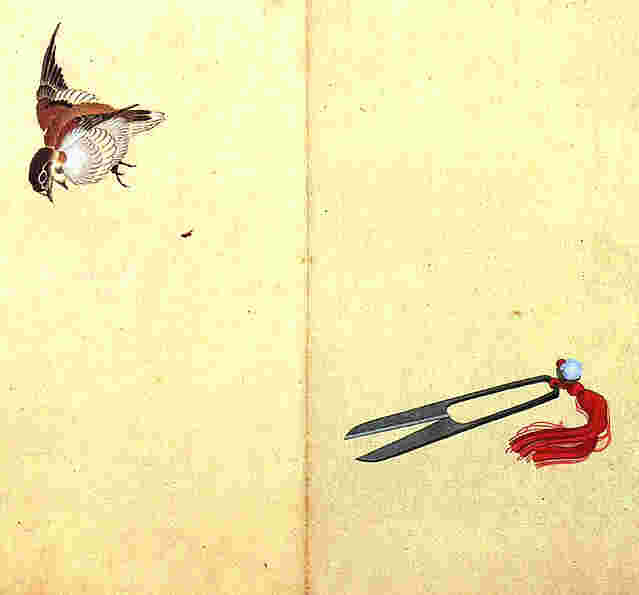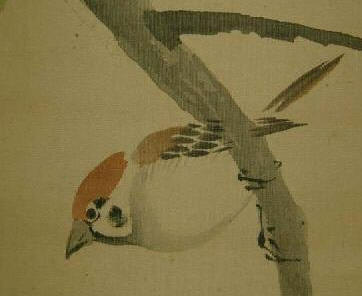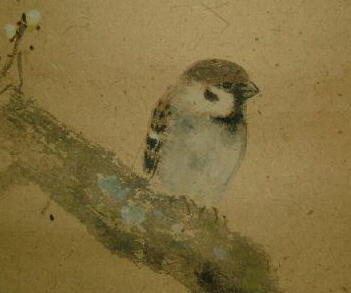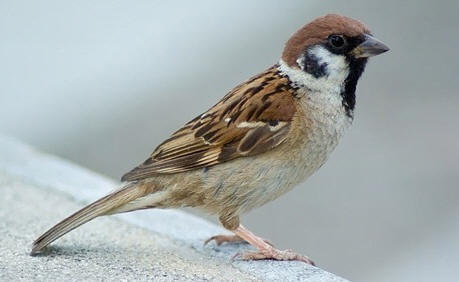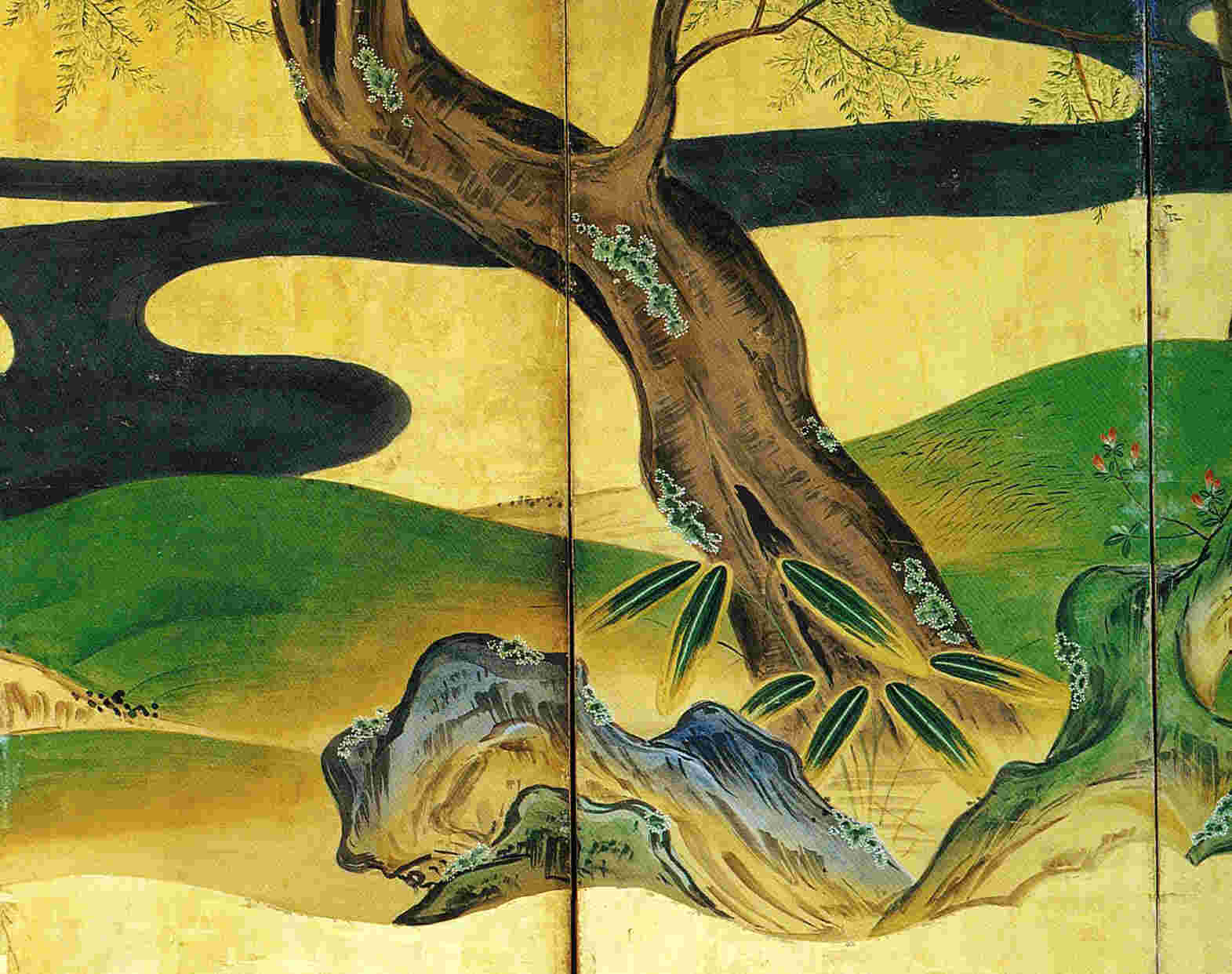| Ishiguro
Masayoshi 石黒政美,
circa 1800 This piece is signed: 石黒政美彫 Ishiguro Masayoshi Hori (Carved by Ishiguro Masiyoshi). The hori 彫 character is seldom used in his signatures. Certification: NBTHK Hozon Masayoshi was born in 1774 and died in 1862. He was a student of the Ishiguro School's founder, Ishiguro Masatsune I (1760-1828), and later worked as a retainer for the Shimazu daimyō at their Edo compound. Masayoshi is one of the most famous masters of the Ishiguro School, other masters include Masaaki, Masahiro, and Masachika. His art names were Jugakusai 寿岳斎, Jugakusai 寿寉斎, Juō 寿翁, Juōsai 寿翁斎, Jurōsai 寿老斎, and Shōzō 庄蔵. The decoration on this set is subdued compared to many Ishiguro pieces. The detail is very good and the bird can be identified as a Japanese "Tree Sparrow", Passer montanus saturatus. Though it is not possible to know the type of tree illustrated by the physical evidence, the Ishiguro School often used the theme of sparrow and plum. The Tree Sparrow and plum (Ume) are fairly common in Japanese art (two photos bottom left). The theme of this set of fuchi/kashira may relate to the story of "Shita-kiri Suzume" (舌切り雀), "The Tongue-cut Sparrow" (painting by Katsushika Hokusai 葛飾 北斎, 1760-1849, below right). The modest decoration of these fittings fits in well with the moral of the "The Tongue-cut Sparrow" (A gentle, kind, modest person will garner more favor than a callous, mean, greedy one). Sparrows are generally emblematic of gentleness and friendship in Japanese lore. The decorations on the fuchi are in the artistic style of Watanabe Shikō, 1683-1755, among others. (See bottom right painting) The base metal is shakudō with an
ishimi ground. The decorations are shibuichi, copper, silver, gold, and
shakudō. |
